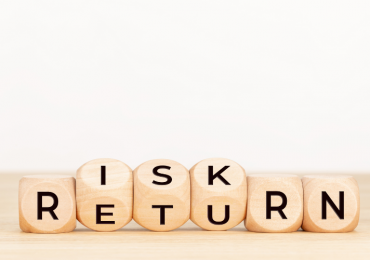
By Jack Forehand (@practicalquant)
We have just passed the one-year mark of our Five Questions interview series. When we first launched the series, I wasn’t sure how it would go. I didn’t know if we could get the types of interesting guests I was hoping for. I also wasn’t sure if I could ask the quality questions it would take to make the interviews interesting (I still am not sure about that).
Despite the apprehension going in, I have really been pleasantly surprised by the response. Almost everyone we have asked to do an interview has agreed. Even some of the people I look up to most in the investment industry like Jim O’Shaughnessy and Michael Mauboussin were generous enough to not only do the interviews, but also provide detailed, thoughtful answers to some very difficult questions.
Now that we have completed our first year, I thought it might be interesting to take a look back at our most popular interviews and some of the important lessons that I learned from them. Below are our five
5) Corey Hoffstein – Beware of the Risks You Can’t See
There are so many risks we take when we invest our money. Some of them are obvious, but many others are not. This is one of many lessons I have learned from following Corey over the years. There is probably
To use a simple example, consider a portfolio that is invested 60% in stocks and 40% in bonds. If that portfolio is rebalanced in September every year, it would have been rebalanced right before the market fell apart in 2008. It would have ridden out the decline in stocks during the bear market, and not brought its stock allocation back up until September 2009. This would have led to a well below target equity exposure during the huge 2009 rally in markets. A portfolio rebalanced in March every year would have had the opposite experience. It would have invested back in stocks near the 2009 bottom and its return would have been much higher because of it. This is just one of the examples we discuss in the interview. If you want to find out about more risks you may be missing, you can read the full interview via the link above.
4) Jim O’Shaughnessy – Learn to Say I Don’t Know
Jim was kind enough to spend an hour and
If you read my interview with Jim, you will see the exact opposite approach. If I asked Jim a question where the answer is unknowable, he said he didn’t know. If I asked him a question that might have an answer, but he hadn’t researched it himself, he said the same thing. Getting to a point where you accept the fact that what we don’t know in investing far exceeds what we do would make anyone a better investor. If someone with Jim’s resume is willing to admit the things he doesn’t know, we all should be willing to do the same thing.
3) Wes Gray – You Get Paid to Endure Pain
My interview with Wes was the first one we published and it remains one of the most popular. When did the interview a little more than a year ago, value investing was struggling (that has mostly continued since then) and we talked about whether there was reason to question whether the value premium still
Since Wes can explain it better than me, here is the direct quote from the article:
Our overarching framework for “active” strategies (which includes “value”), is what we call the sustainable active framework. The basic idea is simple: you get paid to do things that are painful.
If you want to get the long-term premiums of a strategy like value, you have to be willing to endure the pain. And that pain can be much worse than you think and can test even the strongest investors. This isn’t just true of value investing. Whenever you follow any strategy that is different than the market, there are going to be times where those differences are going to hurt you. The ability to stay the course despite that pain is crucial to achieving the strategy’s potential. The interview with Wes reinforced that for me.
2) Michael Mauboussin – Your Thought Process is Essential
Michael is one of the best thinkers in the investing world. So I decided to ask him the most difficult questions I could come up with. I asked him whether passive investing distorts prices. I asked him about where the equilibrium between fees and alpha might occur. I asked him whether the gap between the expectations embedded in stock prices and
1) Ben Hunt – Sometimes This Time is Different
Ben is one of the best writers out there. He also tends to have opinions that challenge my own, which makes him a
I want to thank everyone who participated in our Five Questions series this year. I learned so much doing it and have been privileged to interview some of the smartest people in the investing world. I also want to thank everyone who took the time to read the interviews. I look forward to doing many more of them in 2020.
Photo: Copyright: 123rf.com / convisum









